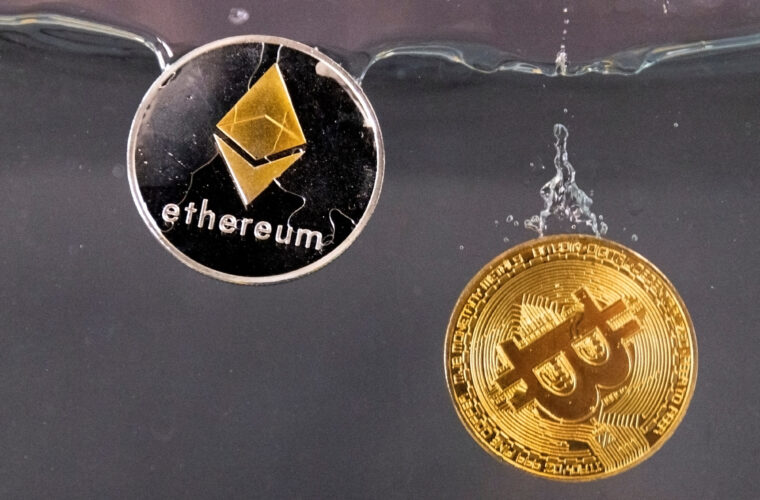By Medha Singh and Lisa Pauline Mattackal
(Reuters) – It’s next-level stuff. “Layer 2” cryptocurrencies native to projects built on top of “layer 1” blockchains such as Bitcoin and Ethereum – have found a new lease of life after a year in the doldrums, buoyed by a rising crypto tide.
Anticipation of easing U.S. borrowing costs and a possible U.S. spot bitcoin exchange-traded fund have lifted crypto prices since the summer, with market bitcoin gaining by about half since the end of August.
Tokens associated with layer 2 projects – which typically aim to speed up transactions and cut costs – have a combined market cap of about $14.3 billion, about a tenth of the total crypto market, according to data from CoinMaketCap.com.
Matic, the largest layer 2 token with a market cap of $6.90 billion, has jumped 20% to $0.74 over the past 30 days, according to CoinGecko. It’s used on Polygon, a platform that reduces congestion on the Ethereum network.
The next four largest coins – immutable, mantle, arbitrum and optimism – have leapt between 9% and 105% over the past month and trade between $0.5 to under $2 apiece.
All five tokens are down between 16% and 86% from their all-time highs hit over the past two years, though.
Ether, the layer 1 token linked to the Ethereum blockchain on which most layer 2 tokens are based, has leapt 13.8% to $2,028.80 in the past month.
Layer 2 tokens, which have proliferated in recent years, can be a risky business. They are small and thinly traded, meaning they can be highly volatile and unpredictable. Picking long-term winners is tough.
“On average, the growth is not sustainable for those tokens … 100 try and one wins,” said Matteo Greco, research analyst at digital asset and fintech investment firm Fineqia International.
“There’s always a bit of thin air behind the moves.”
Price performance is also patchy.
Matic has fallen about 3% in 2023, while gaming token immutable has more than tripled in price, versus bitcoin’s 123% and ether’s 69% gains.

SPECULATIVE CHARACTER
Layer 2 tokens are a gauge of sentiment towards the projects they are linked to, but their extreme volatility also lends them a speculative character. They are often among the last ones to catch a bid when broader crypto market rises and among the first ones to sell off when sentiment is shaken.
While layer 2 tokens are tiny in comparison to big guns like bitcoin, their volatility makes them a favorite among active traders trying to capitalize on market momentum.
“They can be very attractive investments even though they can be very speculative,” said Joshua Peck, chief investment officer at hedge fund TrueCode Capital, whose fund invests in matic. “For a token that’s down 97%, it doesn’t take a lot of capital inflow for it to go three times, four times, five times in price.”
“Active trading is the right approach for these tokens because the market is moving so much,” Peck added.
The future of layer 2 tokens is unclear.
Some analysts see the projects as vital to increasing the practical uses of blockchains like Ethereum, in areas such as finance to gaming.
Yet the market is crowded. Numerous projects and their tokens were launched as the crypto market boomed in 2020, before sinking during the crypto winter of 2022.
“The space feels ‘unserious’ right now … in terms of being able to point to an example of something you’d like to run your business or family’s personal finances on,” said Alyse Killeen, managing partner at venture capital firm Stillmark.
Many investors agree that only projects with useful practical applications will survive.
“In these macro phases, the use cases are not really so important. The real difference between assets that have decent use cases and assets that don’t is (in) the bear market,” said Fineqia International’s Greco.
“Assets that have good use cases are able to resist the downtrend even though they get hit hard.”



